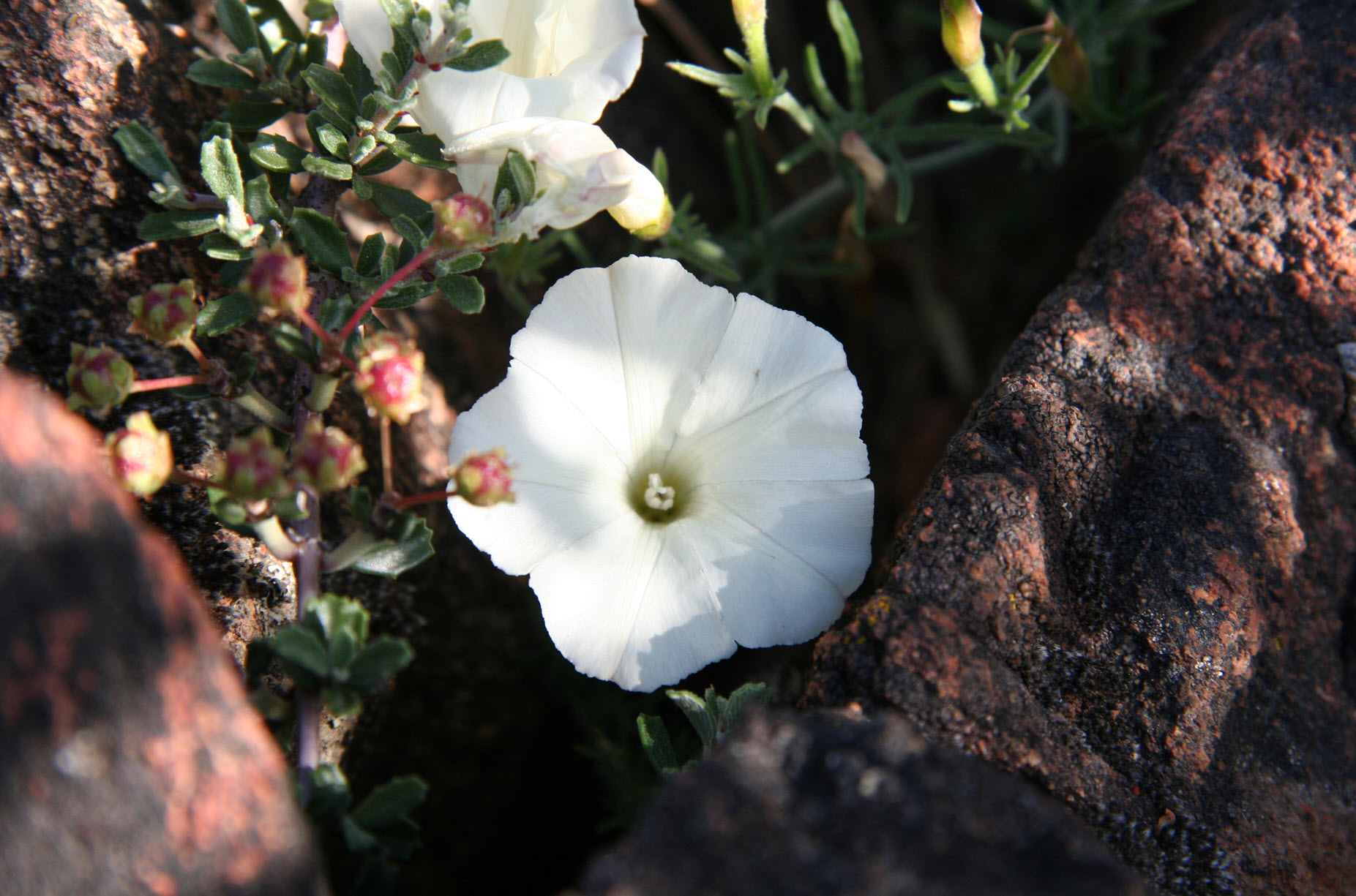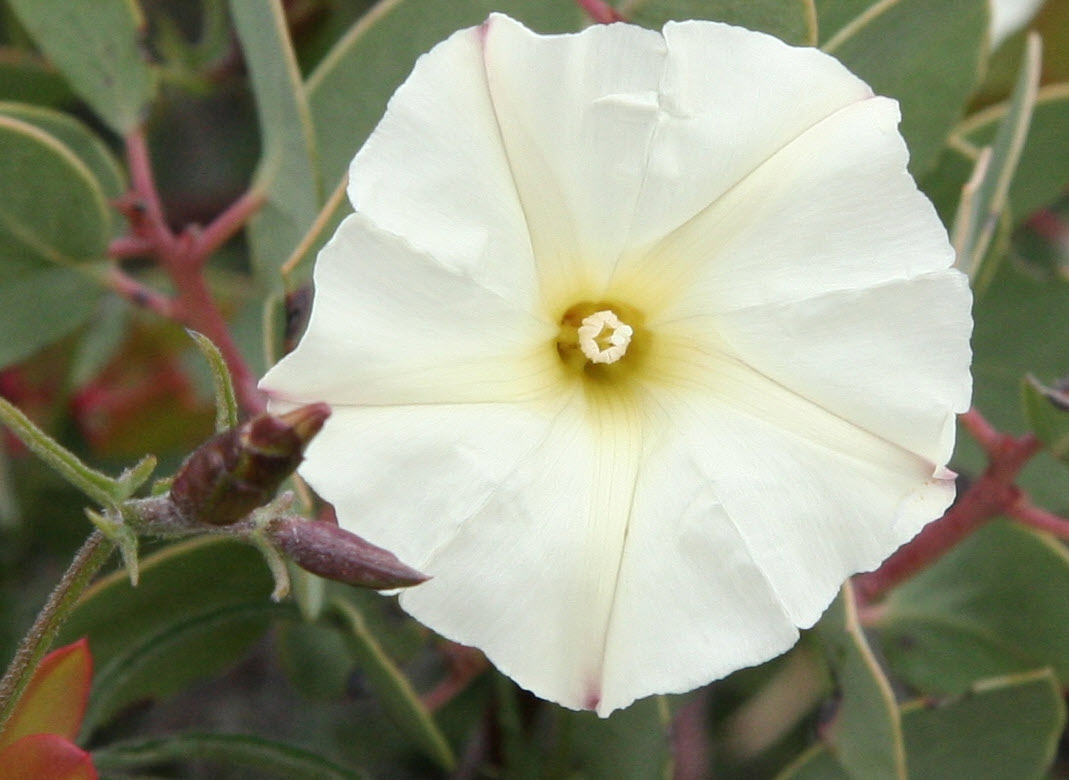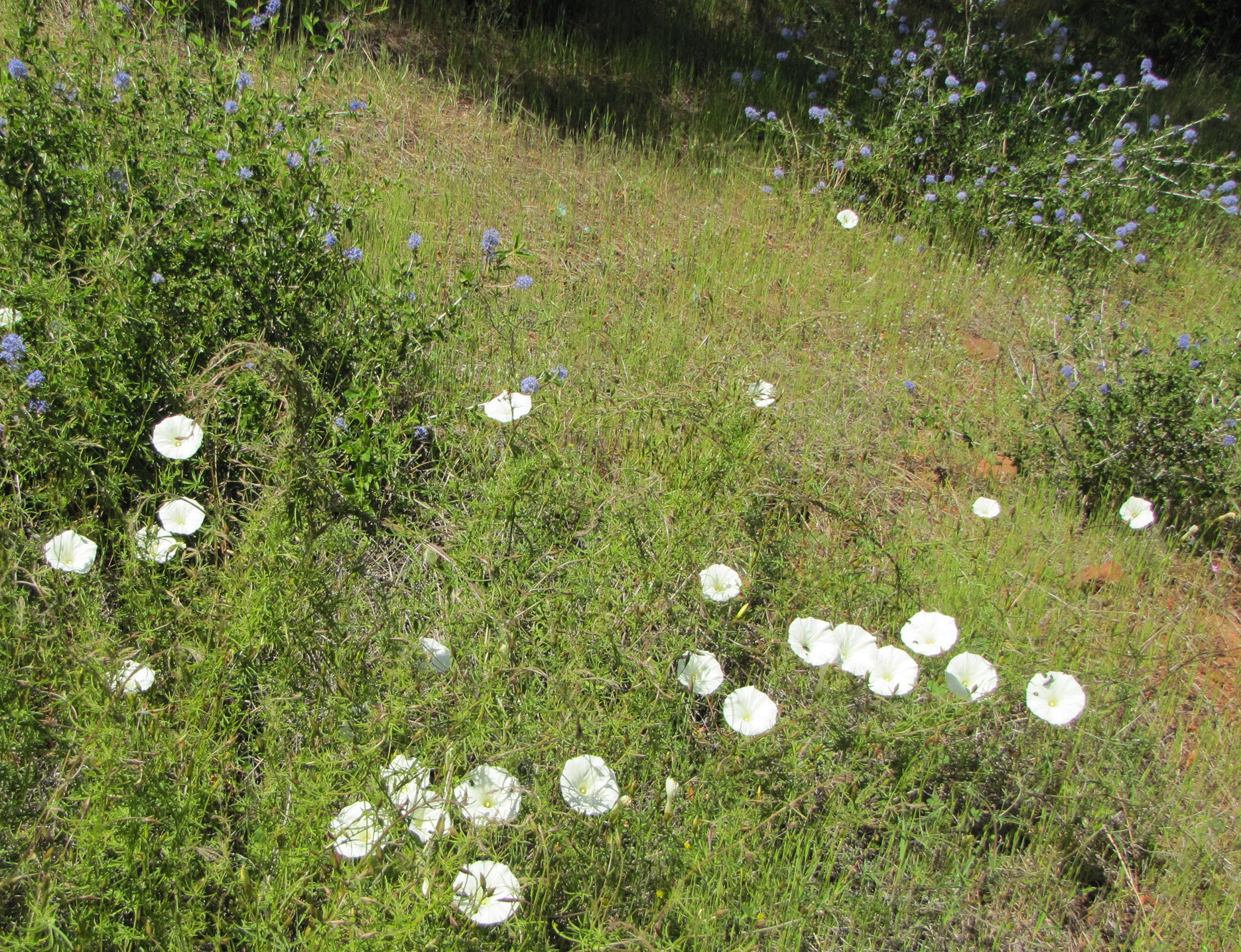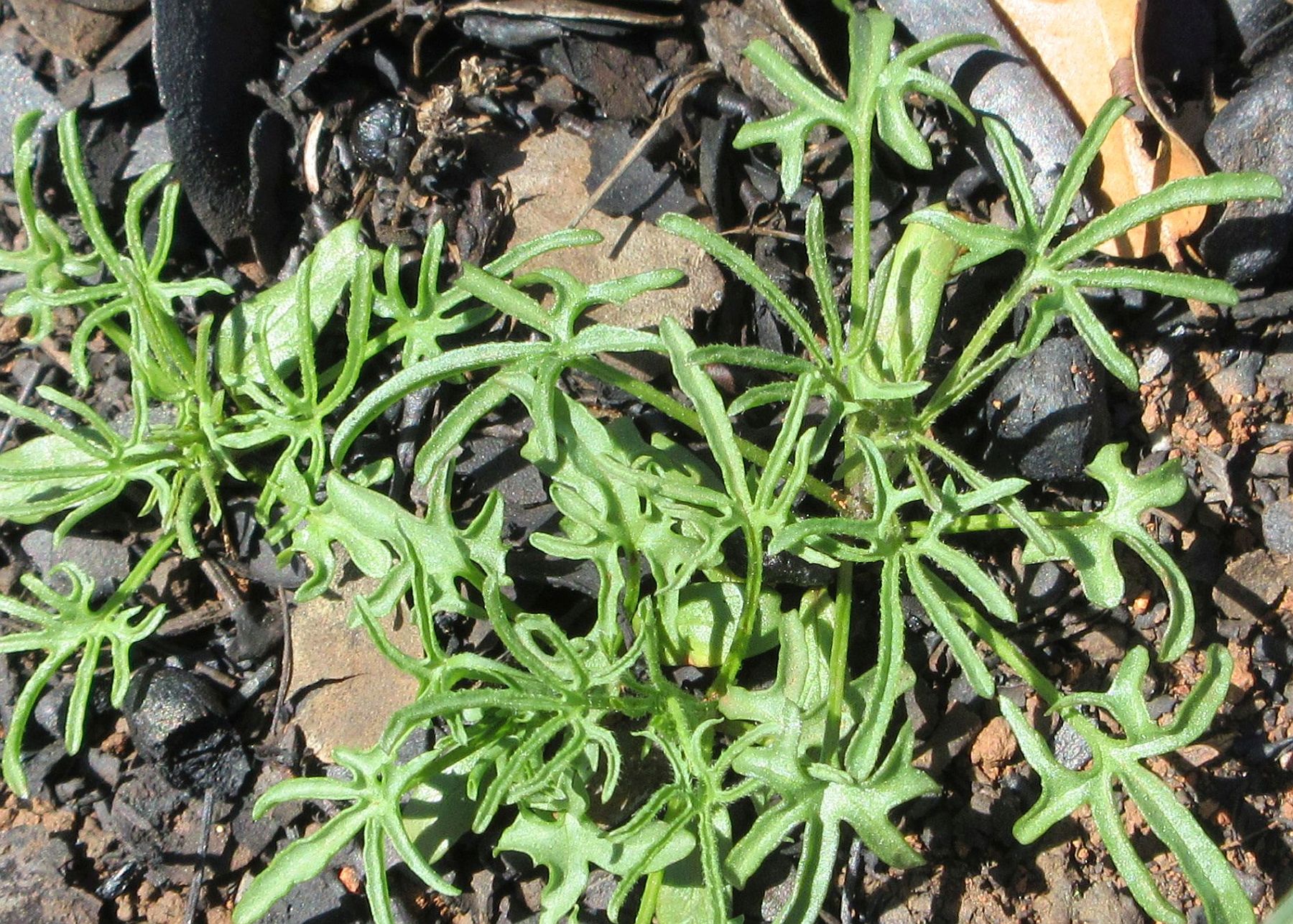Rare Plant Species found at the Pine Hill Preserve
| Bisbee Peak rush-rose | -- Crocanthemum suffrutescens |
Listed by the California Native Plant Society as a Review List species, a designation indicating that additional information is needed before assigning an appropriate status to this species.
Bisbee Peak rush-rose is distinguished from similar looking plants by having both a greater density of stem hairs and flatter and broader leaves which it retains until summer.
Occurrences of Bisbee Peak rush-rose have been found in Amador, Calaveras, Mariposa, Sacramento, and Tuolumne counties, as well as, within the gabbro soil region of El Dorado County.
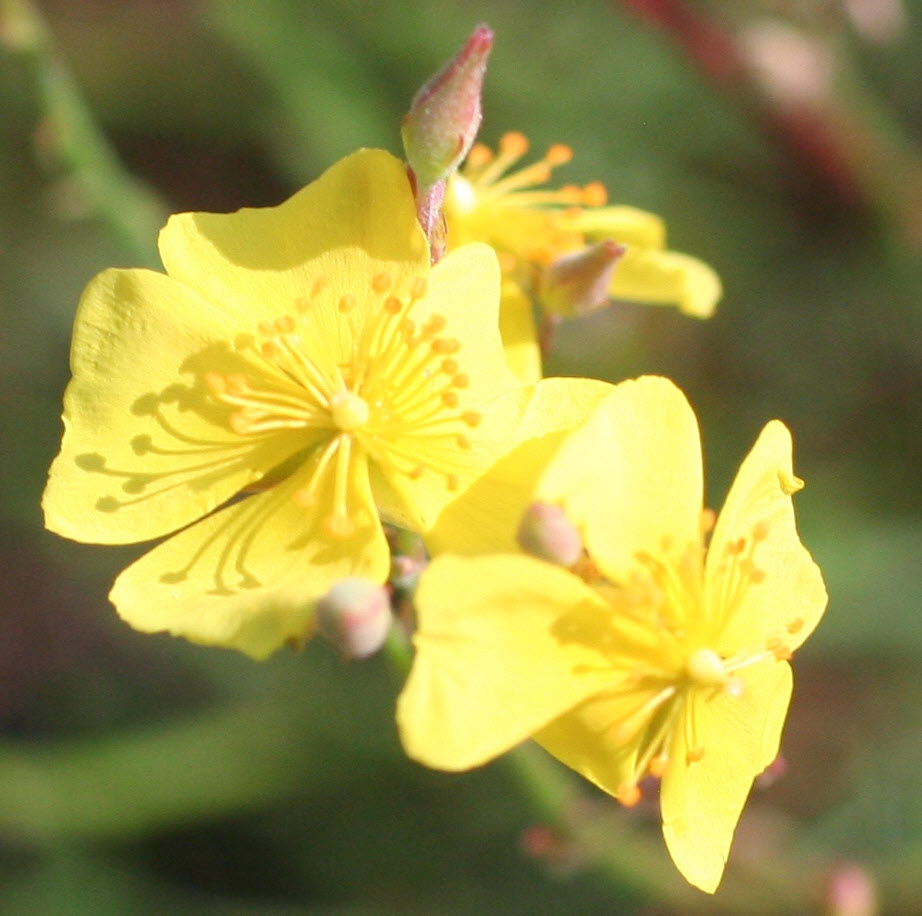
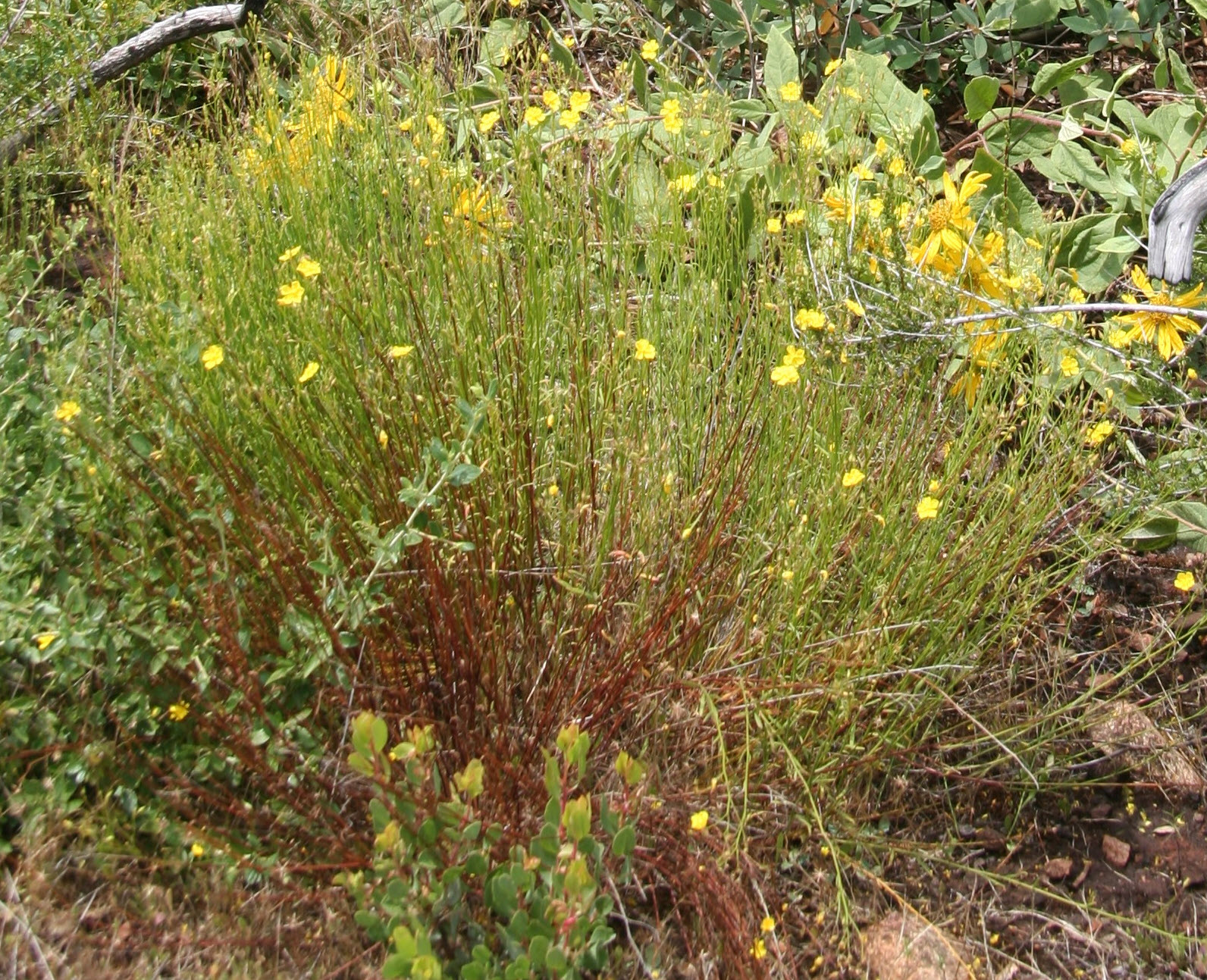
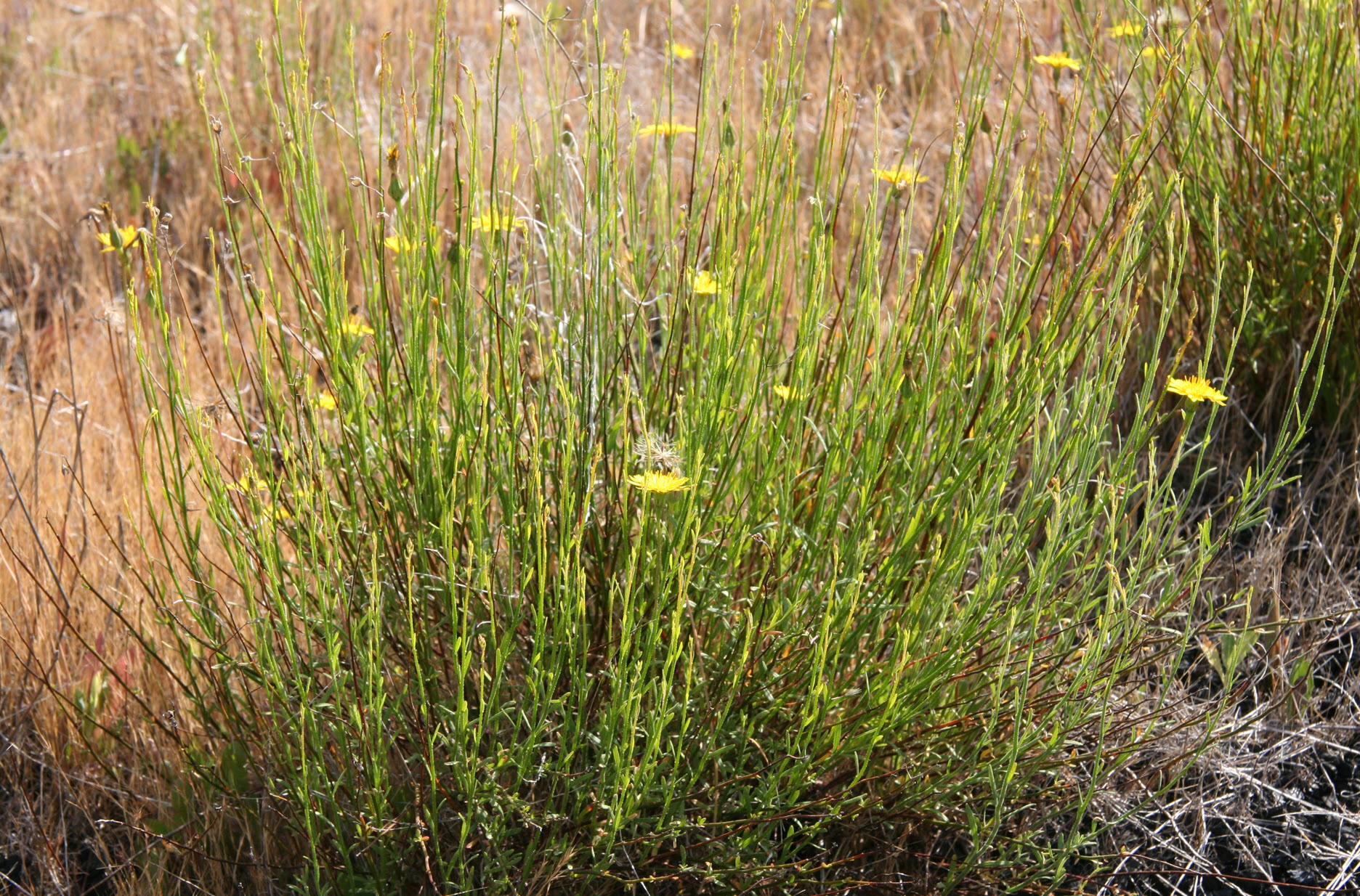
| El Dorado bedstraw | -- Galium californicum ssp. sierrae |
Listed under the Federal Endangered Species Act as Endangered and with the State of California as Rare
Difficult-to-see, tiny El Dorado bedstraw dies back each year to the ground's surface.
The plant grows in loose tufts; each stem is 3 to 5 inches (7 to 14 cm) long and is covered with very short hairs. The narrow leaves of this species grow in sets of four around the stems. Very small, pale yellow flowers cluster at the tips of the stems. El Dorado bedstraw often grows in the understory of live oak or black oak woodlands.
This rare plant species grows only in western El Dorado County on the gabbro soils.
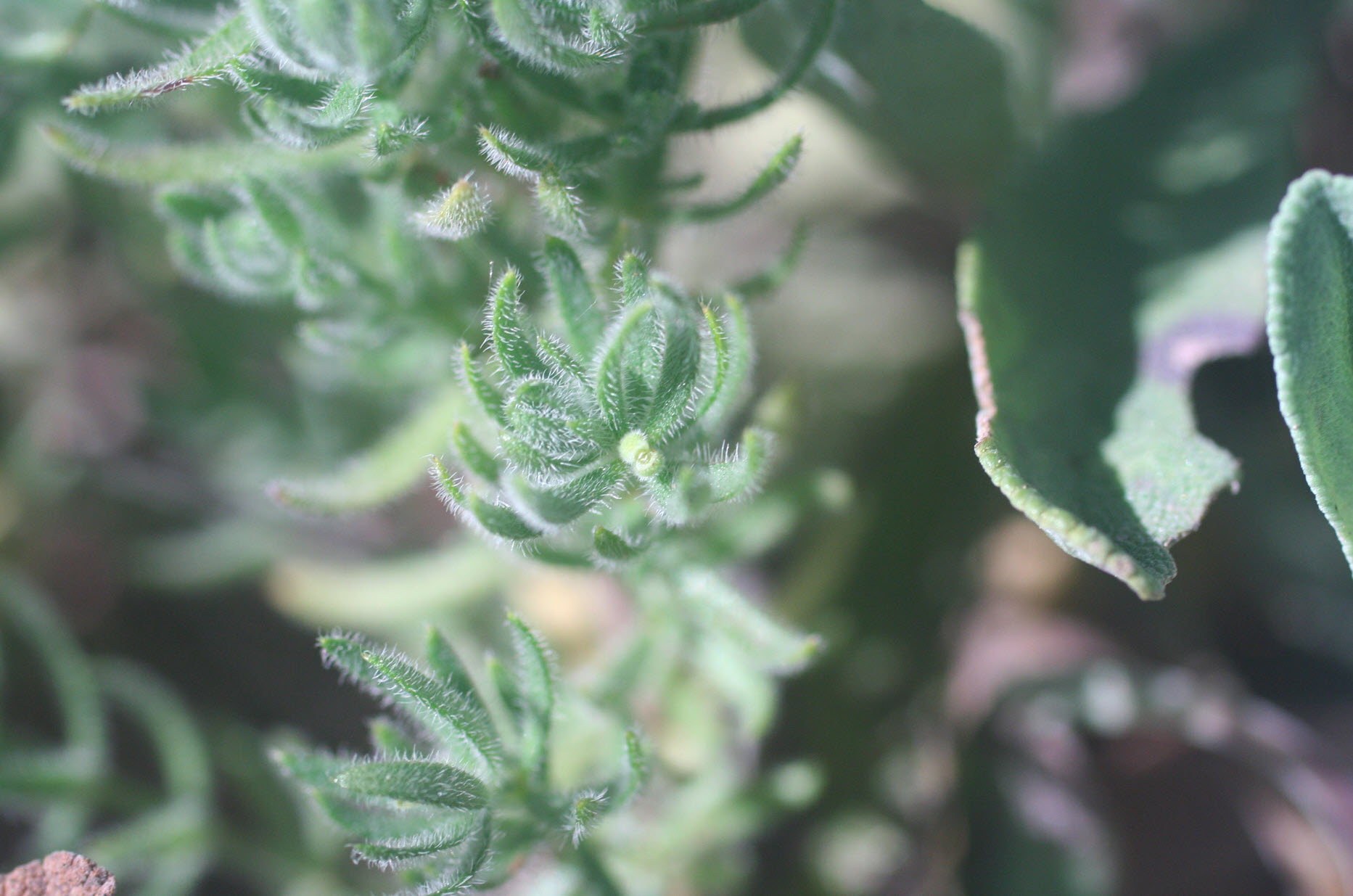
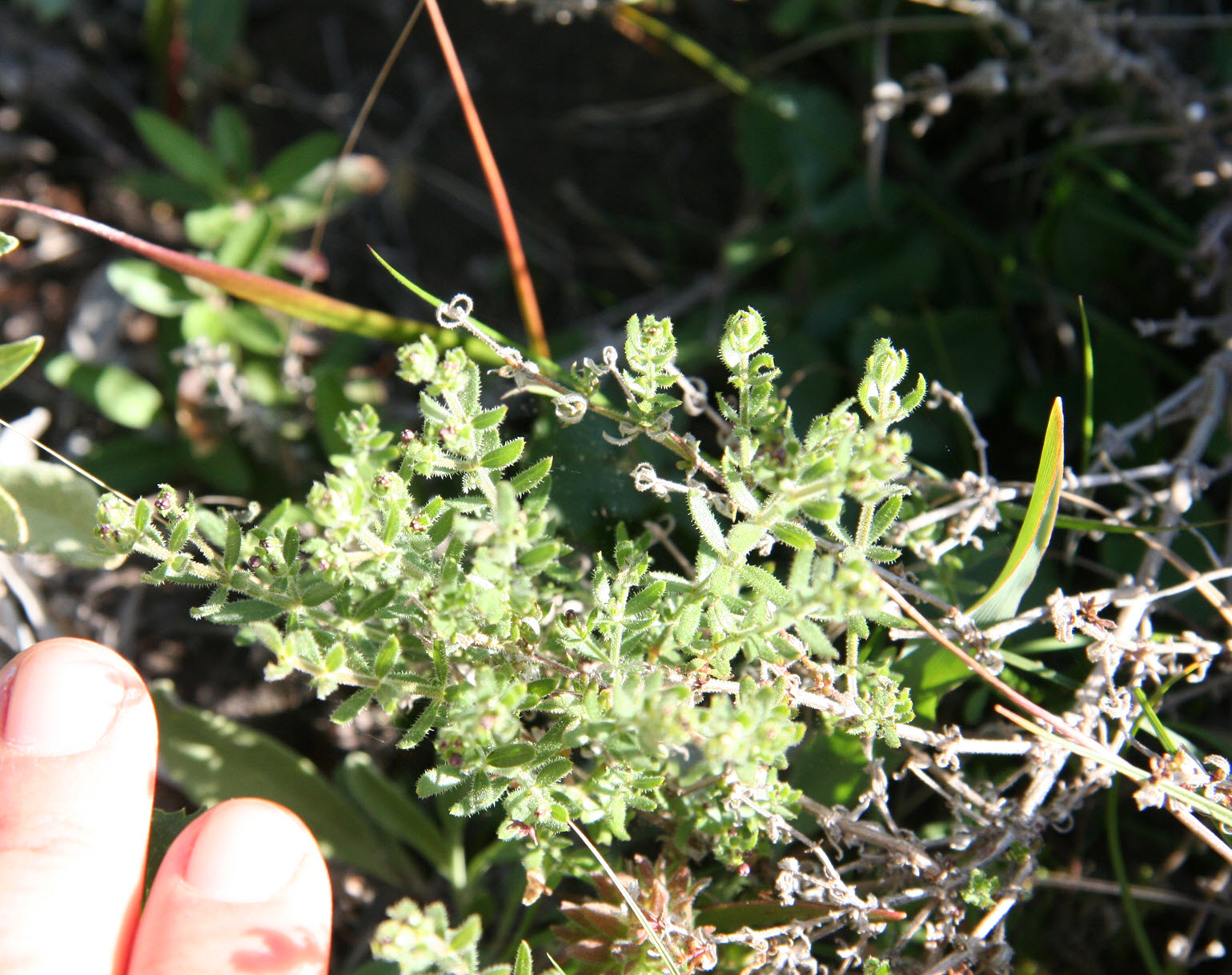
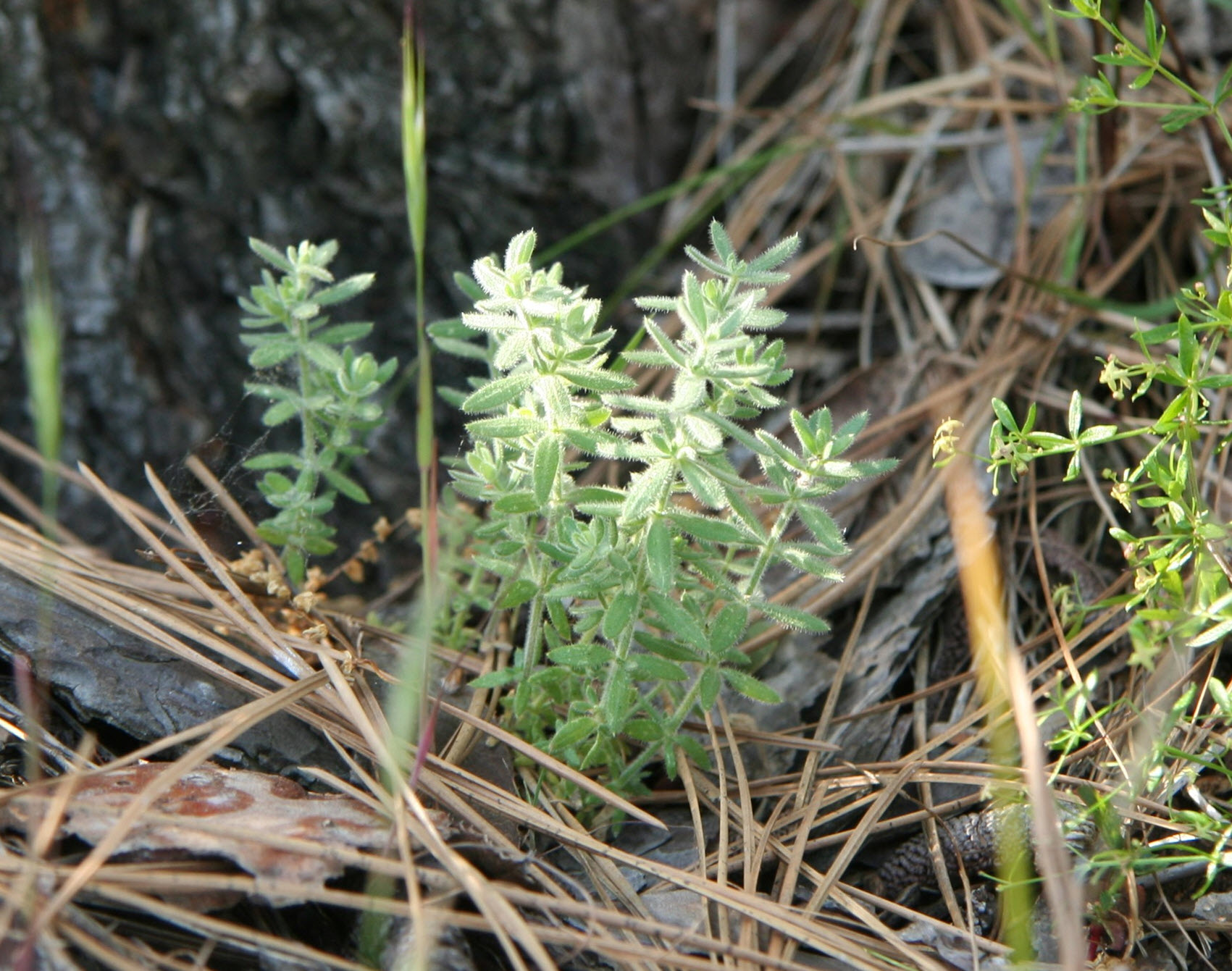
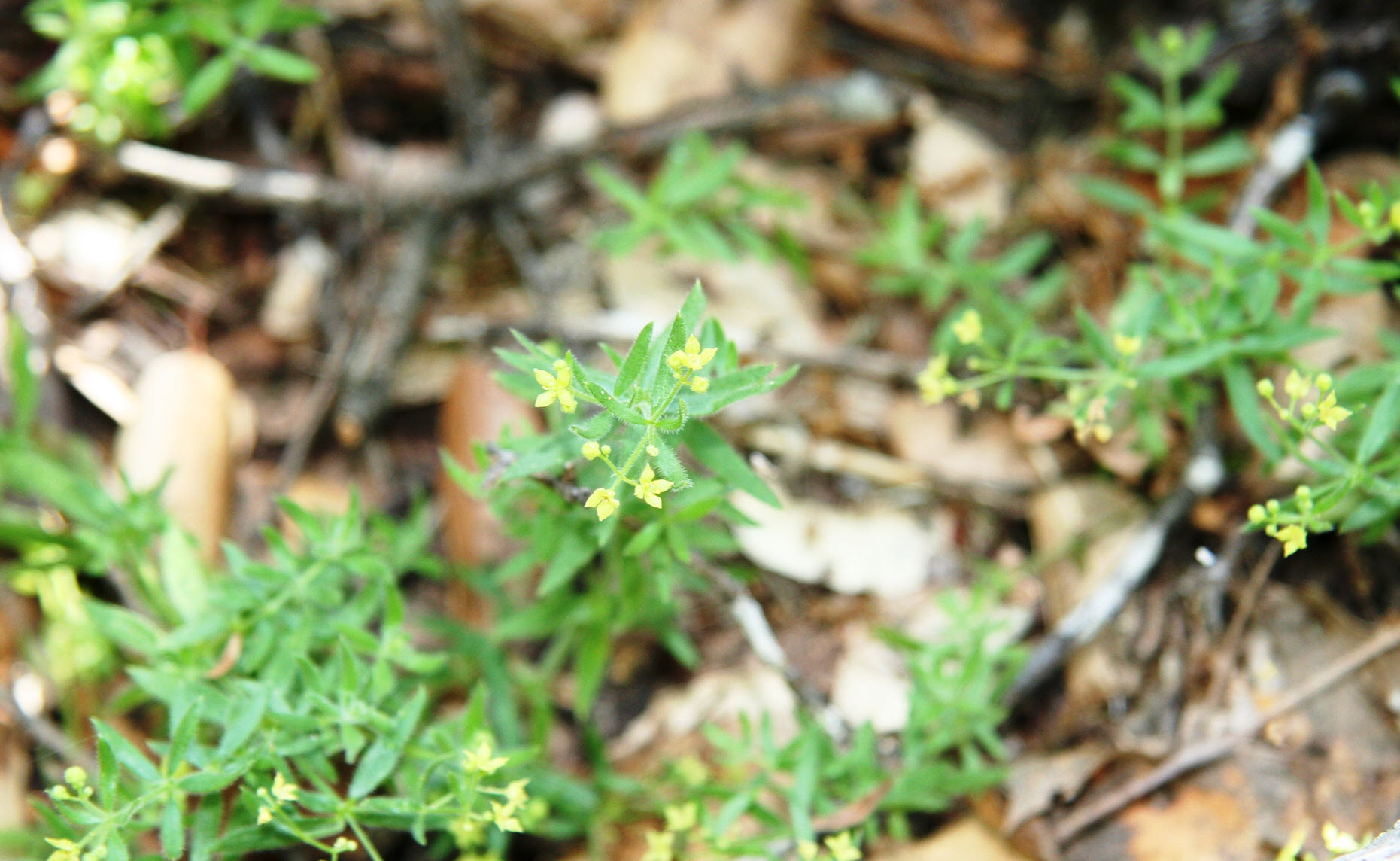
| El Dorado mule-ears | -- Wyethia reticulata |
Listed by the California Native Plant Society as Rare.
Growing along the stem, the leaves of El Dorado mule-ears are large (up to 6 inches long) and triangular in shape.
The flower heads grow up to 3 inches in diameter and look like a typical sunflower with bright yellow ray and disk flowers.
It occurs both in openings and beneath the canopies of trees and shrubs in both chaparral and oak woodland habitats, sometimes forming dense patches.
El Dorado mule-ears grows only in the gabbro soil region of western El Dorado County.
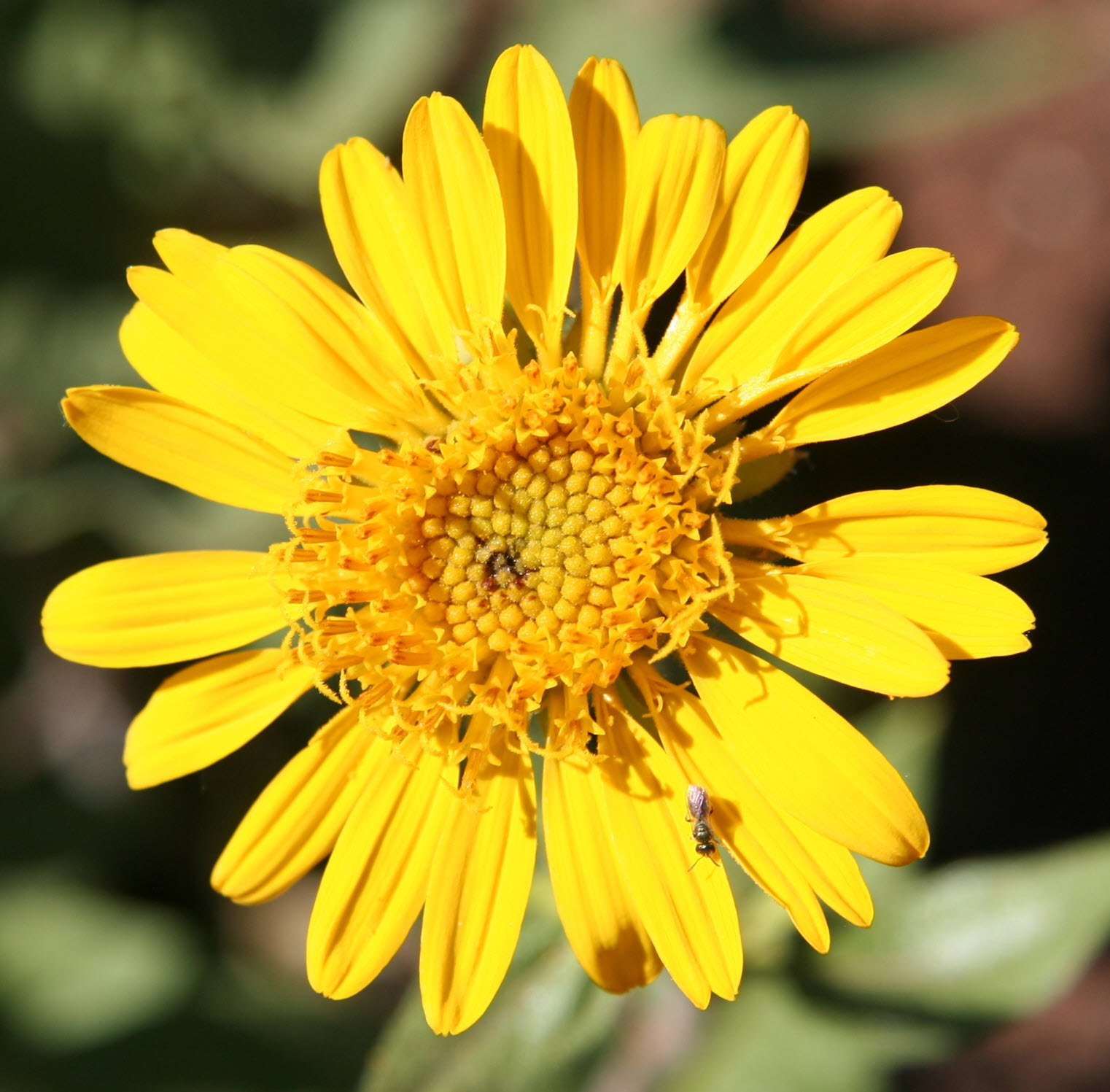
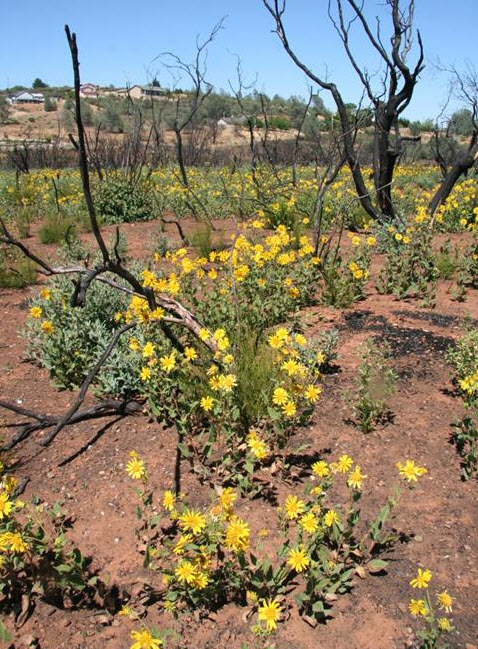
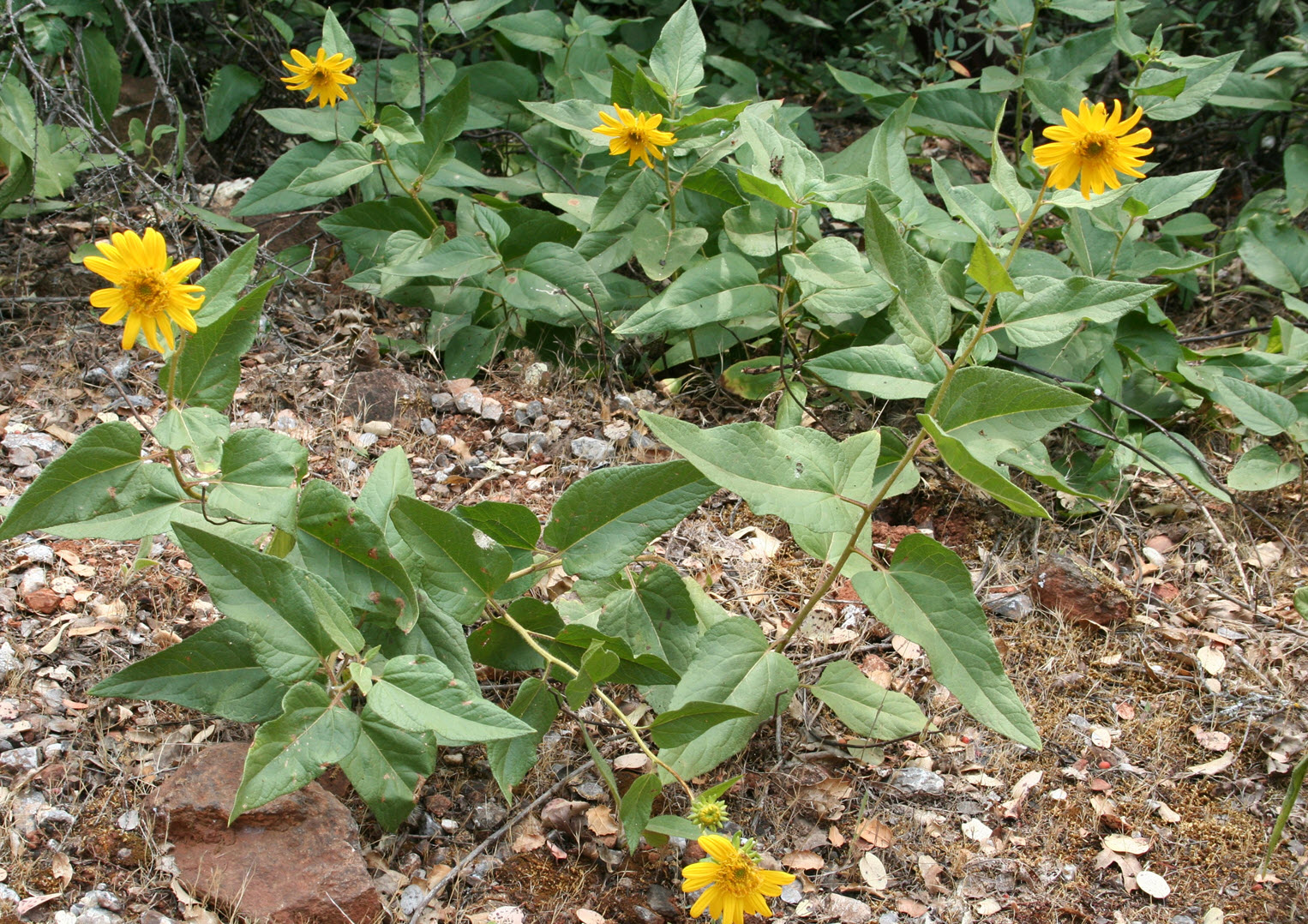
| Layne's butterweed | -- Packera layneae |
Listed under the Federal Endangered Species Act as Threatened and with the State of California as Rare.
A member of the sunflower family, Layne’s butterweed grows from a base of thin grey-green leaves that are typically 2 to 4 inches long and 0.5 inches wide with a few teeth along the leaf margins. The stems are slender with a few leaves and are usually 10 to 18 inches tall.
Slightly asymmetrical, the yellow flower heads at the ends of the stem appear as if some of the “petals” are missing.
This species is found within chaparral and woodland habitats on gabbro and serpentine soils in western El Dorado, Placer, Tuolumne, and Yuba counties.
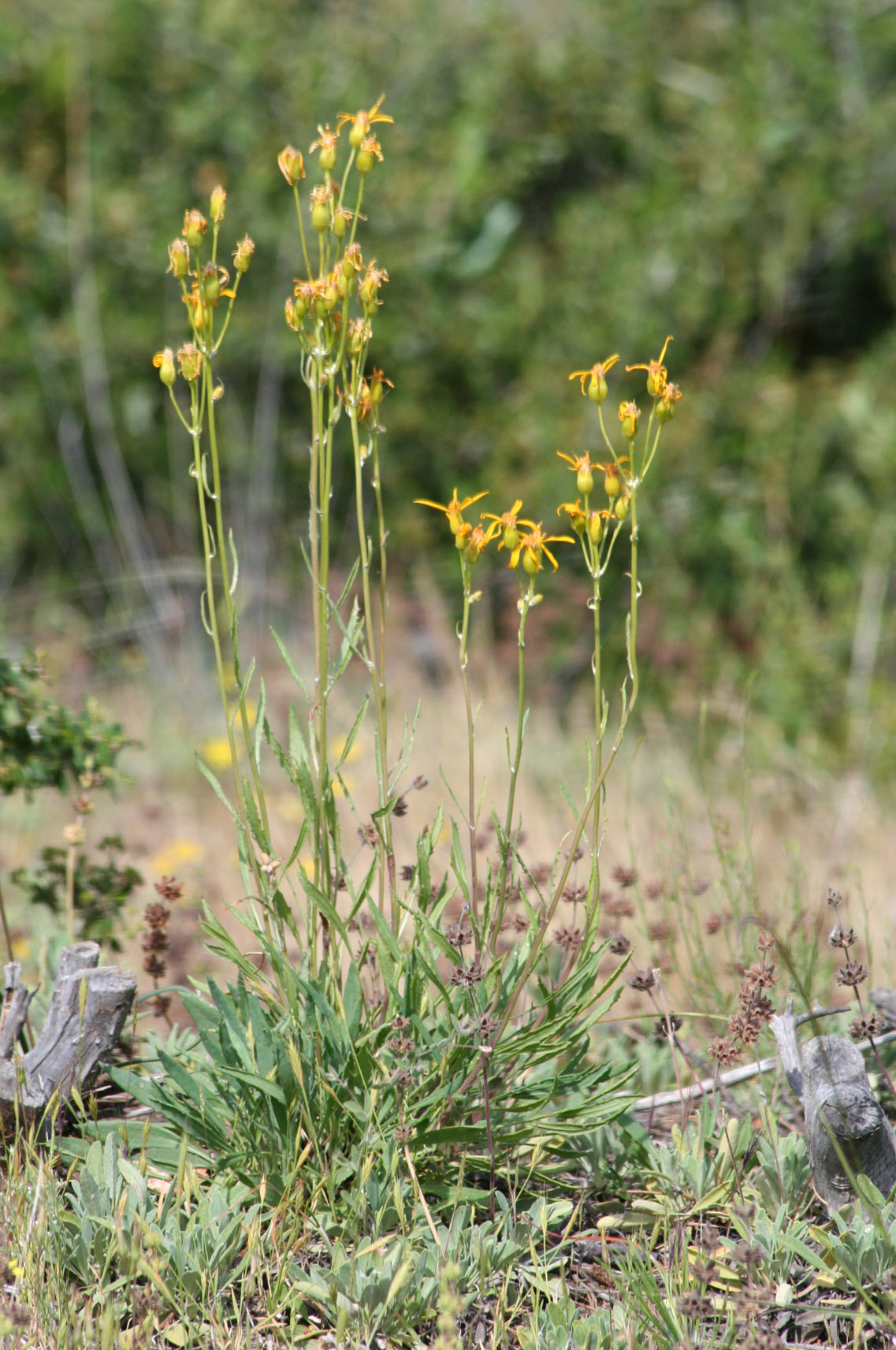
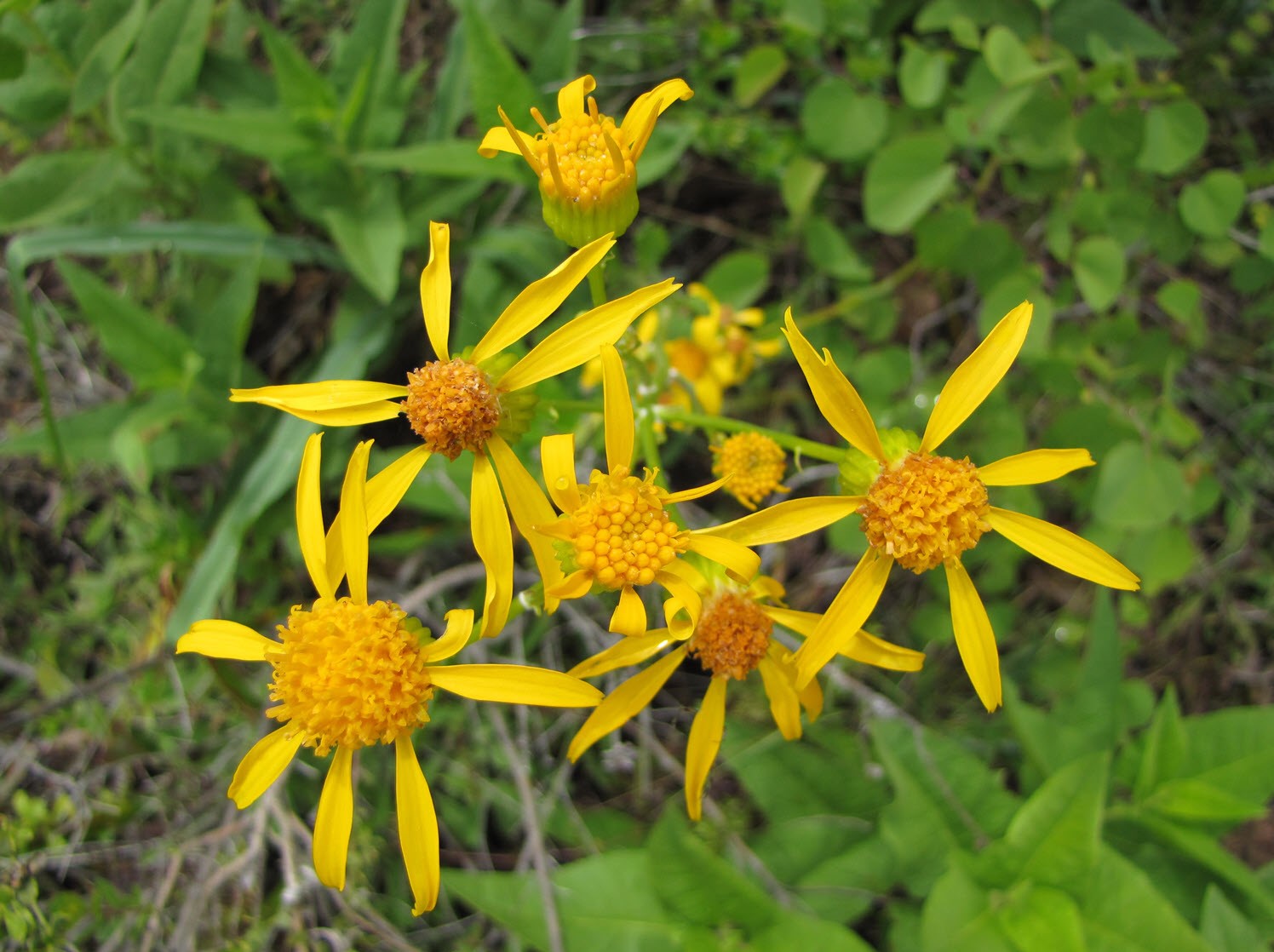
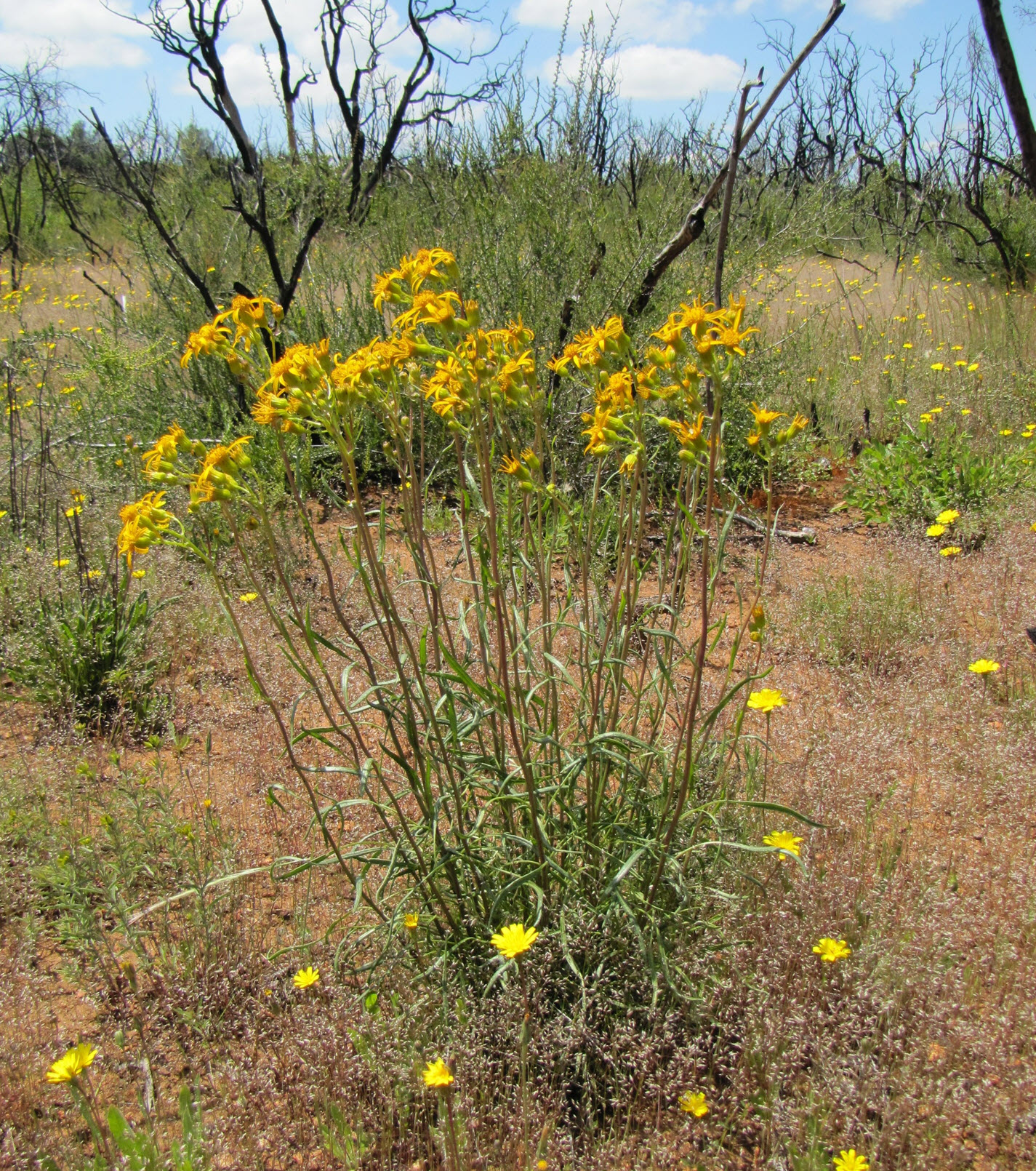
| Pine Hill Ceanothus | -- Ceanothus roderickii |
Listed under the Federal Endangered Species Act as Endangered and with the State of California as Rare.
The branches of this dwarf, low-growing shrub radiate from the base of the plant. Additional roots develop from points where the branches touch the ground. Bark is grey-brown and the leaves are small, tough and green.
The very small white flowers form in clusters that look somewhat like cotton balls; sometimes the flowers have a faintly bluish or pinkish tinge.
Periodic fire has positive effects on this species; new seedlings sprout from soil following a fire.
This plant only grows in western El Dorado County.
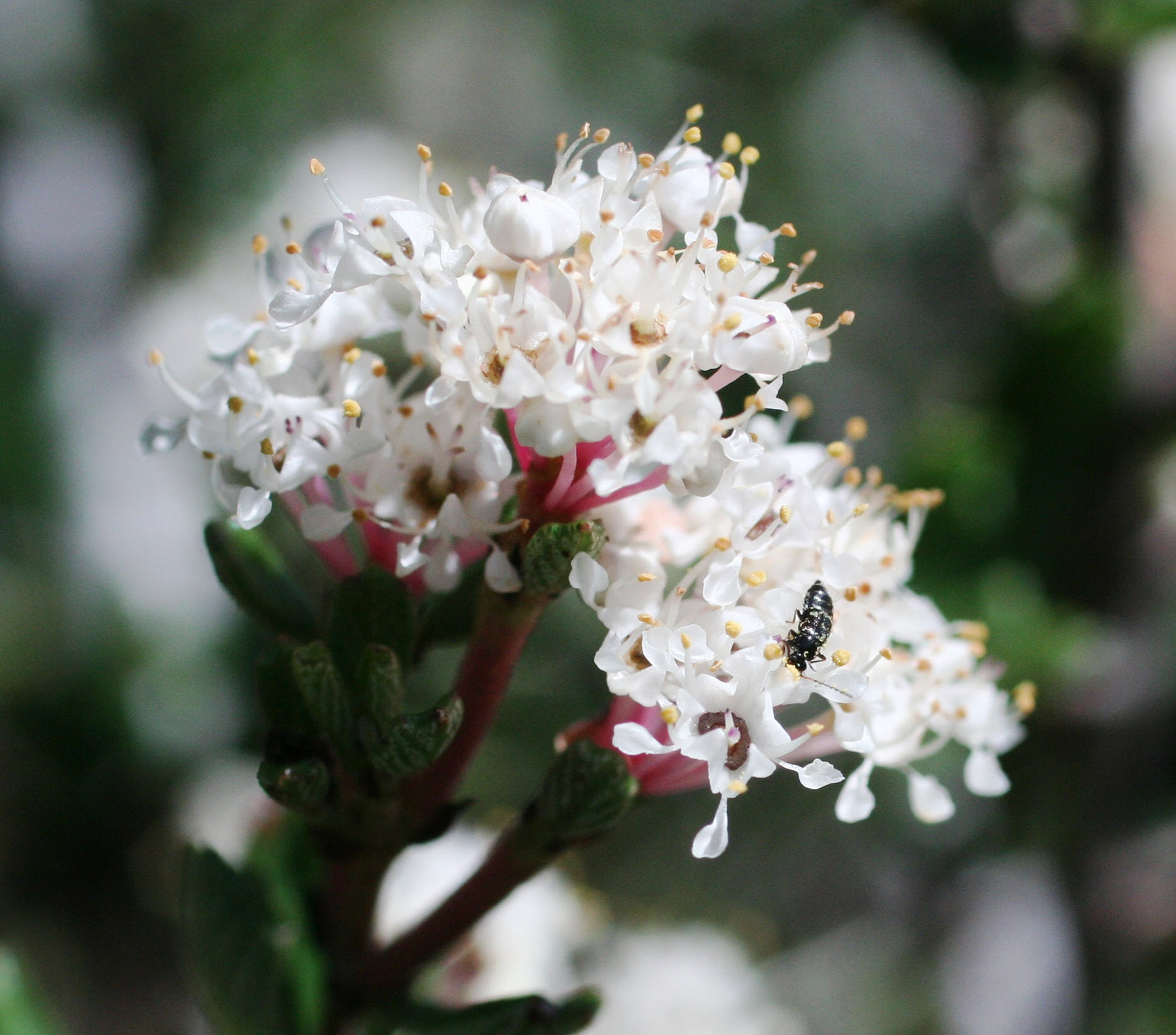
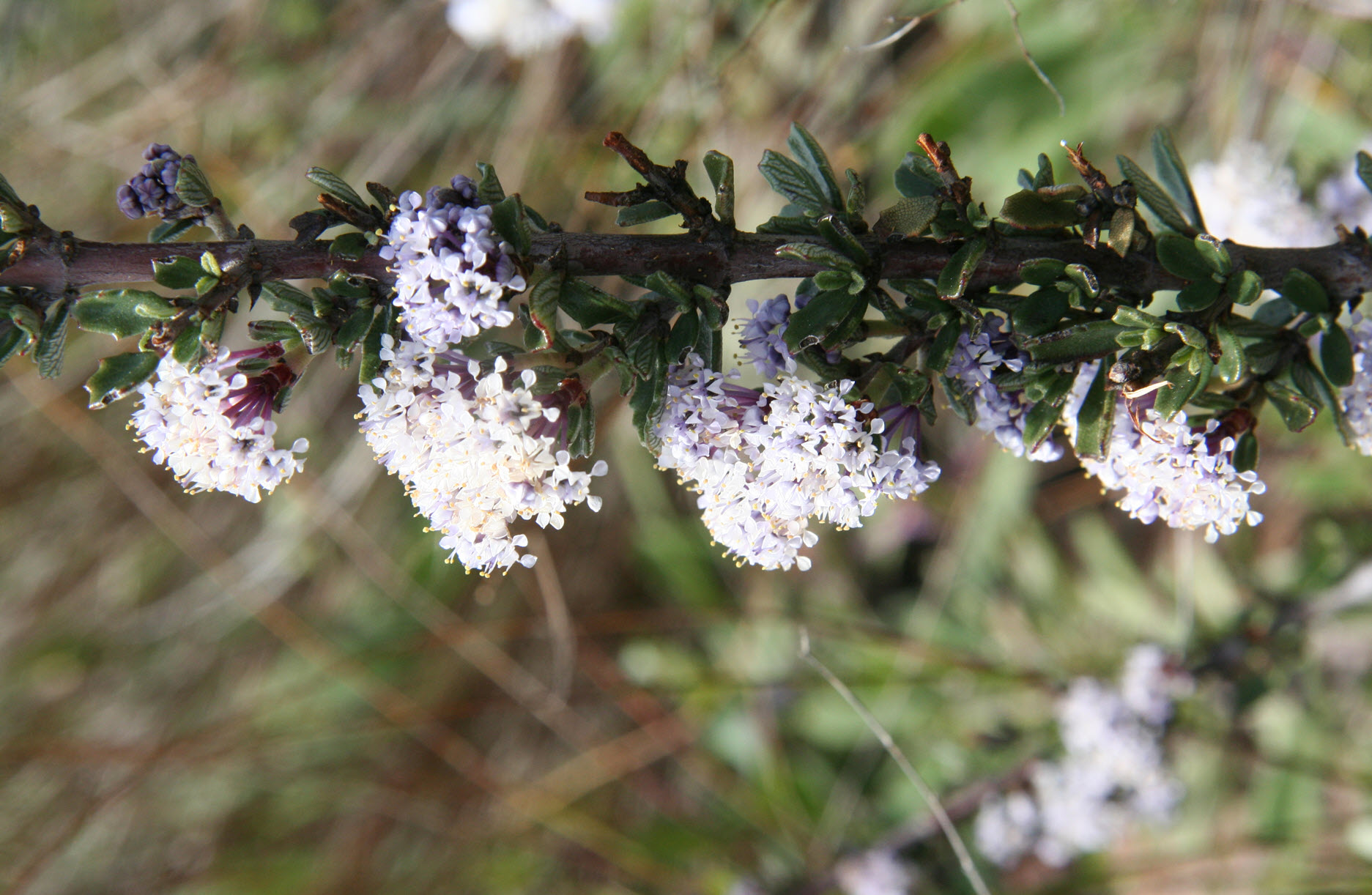
| Pine Hill flannelbush | -- Fremontodendron decumbens |
Listed under the Federal Endangered Species Act as Endangered and with the State of California as Rare.
Pine Hill flannelbush is a sprawling shrub with many branches forming at the base. The leaves are fairly round, about 1 inch long, and lobed. Short hairs cover the dark green leaves. Flowers bloom along the younger branches and are 1 to 2 inches in diameter with five petals that are rich orange in color.
Periodic fire has positive effects on this species allowing plants to resprout and seeds to germinate.
Pine Hill flannel-bush grows only at the Pine Hill Preserve, specifically on Pine Hill itself and in the immediate vicinity.
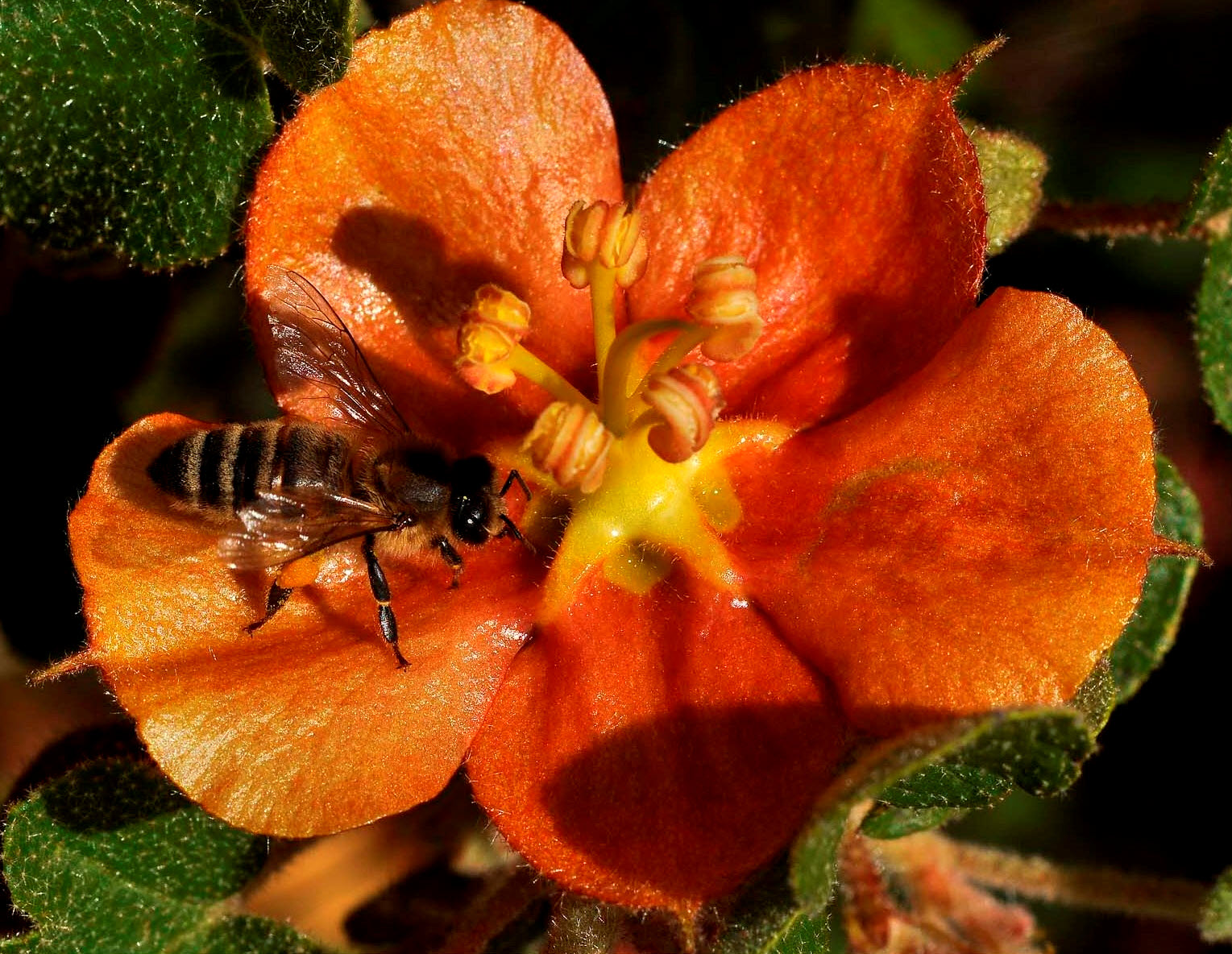
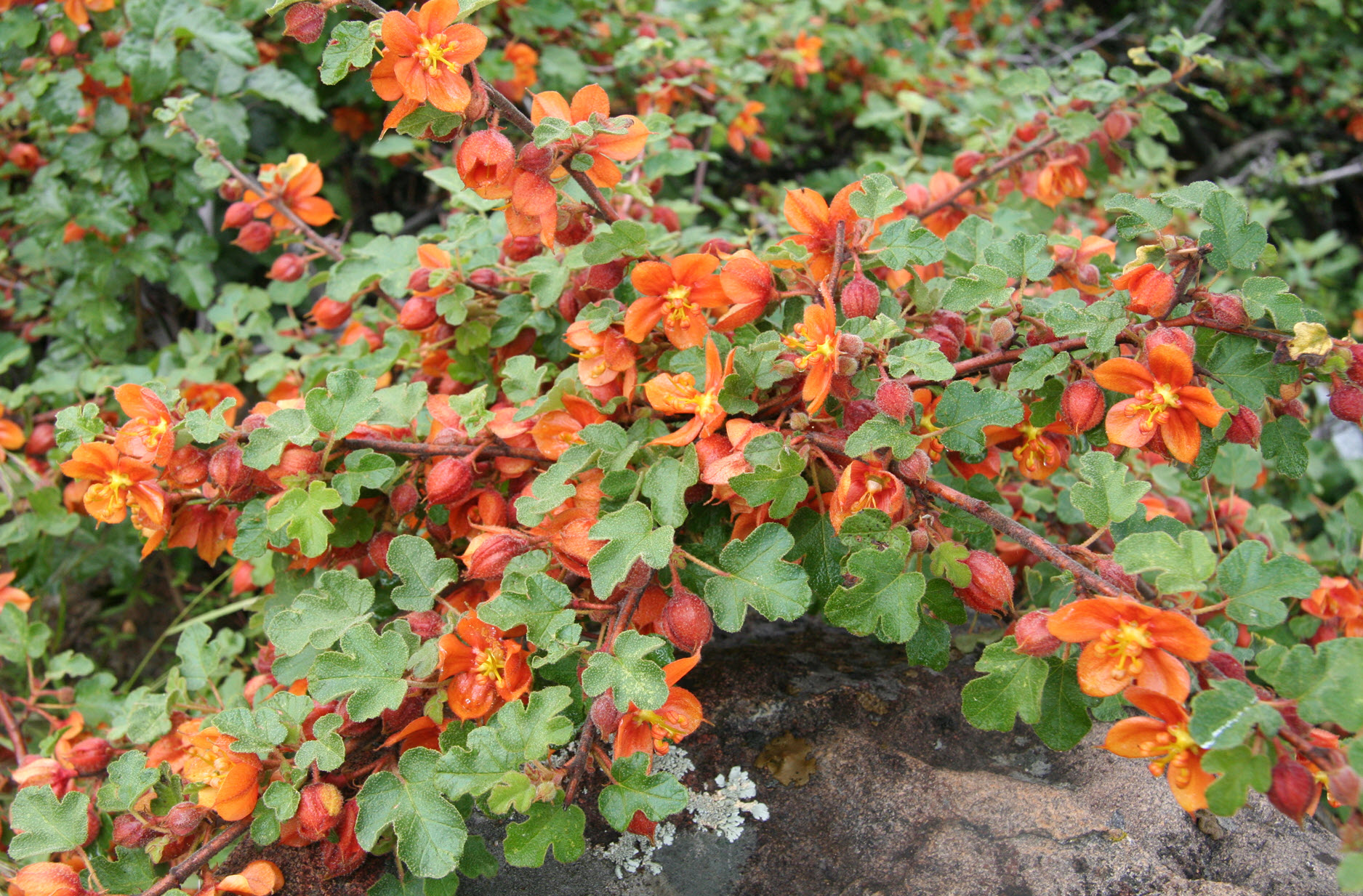
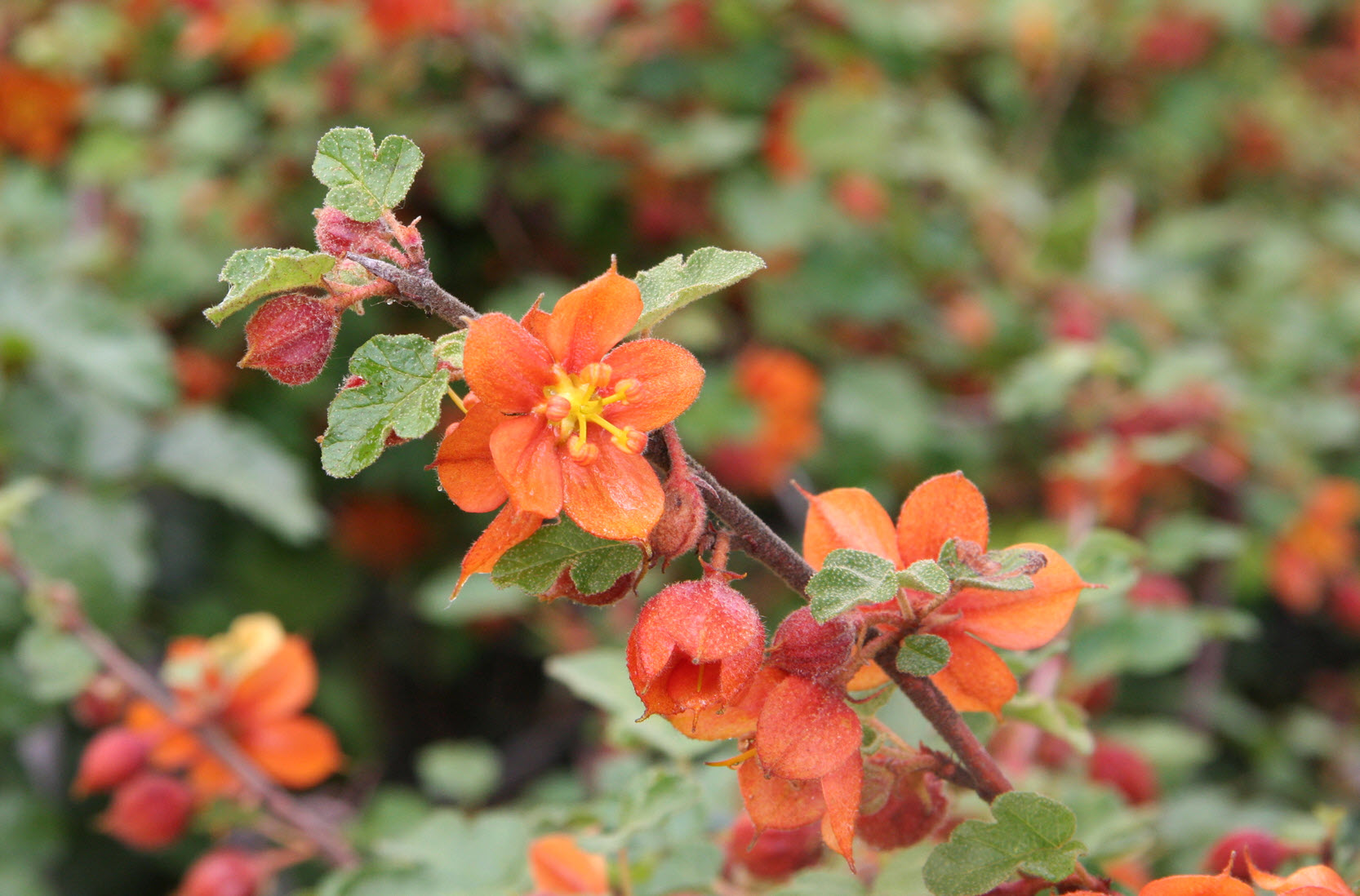
| Red Hills soaproot | -- Chlorogalum grandiflorum |
Listed by the California Native Plant Society as Rare.
Red Hills soaproot is a member of the lily family and grows from a bulb. Several leaves radiate from the base of the plant. Leaves are usually 4 to 12 inches long, between 0.25 and 0.5 inches in width, and wavy.
The flowers, which open in the evening, bloom along the upper portion of slender stalks which are 1 to 2 feet in height. Each of the six petals are about 1 inch long, slender, and white with a vein of purple down the middle.
Red Hills soaproot grows in a variety of soils including gabbro and serpentine; it is typically in open areas within chaparral habitat. It occurs in several counties including western El Dorado, Amador, Calaveras, Placer, and Tuolumne counties.
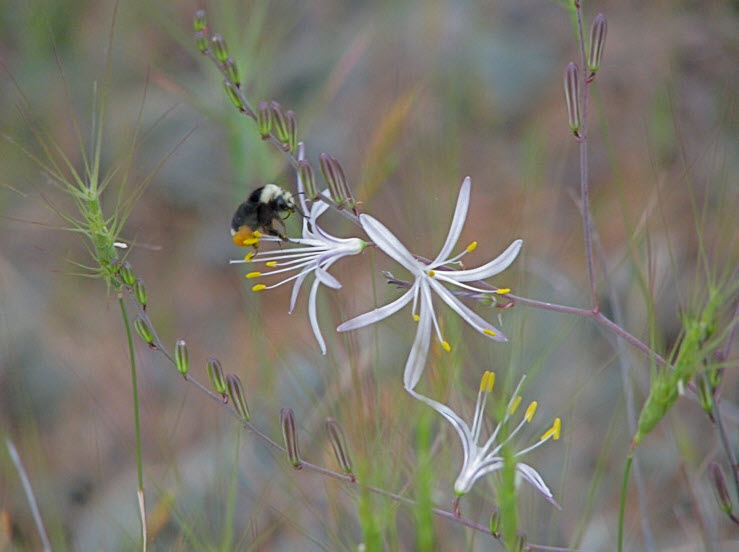
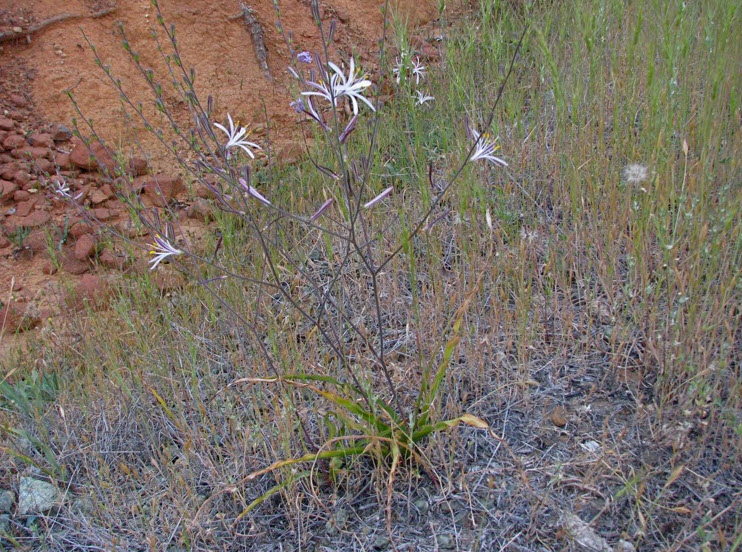
| Stebbins' morning-glory | -- Calystegia stebbinsii |
Listed under the Federal Endangered Species Act as Endangered and with the State of California as Endangered.
The flowers of this species are much like a common morning glory, but its leaves are distinct – each is divided into five to seven very thin segments that spread outwards from the base of the leaf. The segments are roughly 0.5 inches in length and resemble fingers on a hand. This vine grows from underground stems and supports many large, showy white flowers during the spring.
Stebbins’ morning-glory is found in openings in the chaparral. Fire promotes the germination of seeds in the soil.
This species occurs in Nevada County and western El Dorado County.
